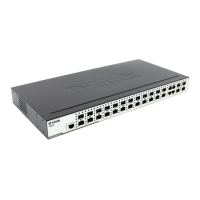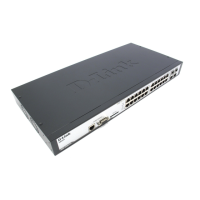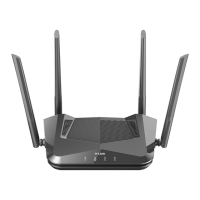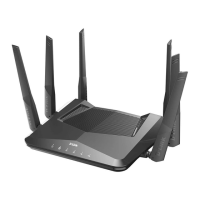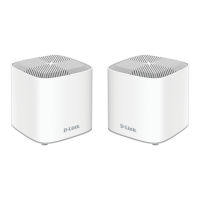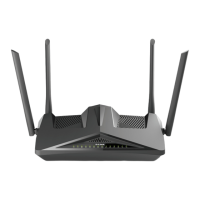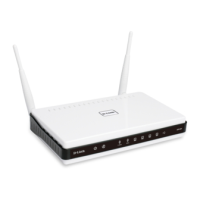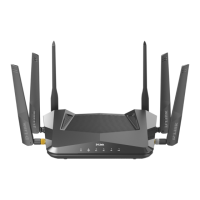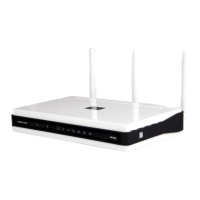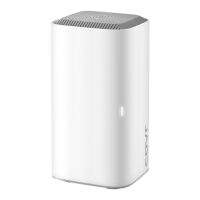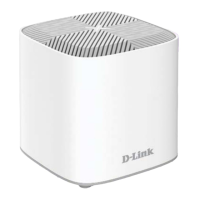xStack® DES-3200 Series Layer 2 Ethernet Managed Switch CLI Reference Manual
14
6
To create a VLAN v1, tag 2:
DES-3200-28:4#create vlan v1 tag 2
Command: create vlan v1 tag 2
Success.
DES-3200-28:4#
delete vlan
Used to delet
e a previously configured VLAN on the Switch.
Purpose
delete vlan <vlan_nam
e 32> | vlanid <vidlist>
Syntax
This
command will delete a previously configured VLAN on the
Switch.
Description
Parameters
<vlan_name 32> The VLAN name of the VLAN to delete.
<vidlist> Specifies a range of multiple VLAN IDs to be deleted.
Only Administrator-level users
can issue this command.
Restrictions
Example usage:
To remove the VLAN “v1”:
DES-3200-28:4#delete vlan v1
Command: delete vlan v1
Success.
DES-3200-28:4#
config vlan
Used to add
additional ports to a previously configured VLAN.
Purpose
config vlan
<vlan_name 32> {[add [tagged | untagged | forbidden] |
delete] <portlist> | advertisement [enable | disable]} (1)
Syntax
This
command is used to add ports to the port list of a previously
configured VLAN. The user can specify the additional ports as
tagging, untagging, or forbidden. The default is to assign the ports as
untagging.
Description
Parameters
<vlan_name 32> The name of the VLAN to which to add ports.
add Entering the add parameter will add ports to the VLAN. There
are three types of ports to add:
tagged Specifies the additional ports as tagged.
untagged Specifies the additional ports as untagged.
forbidden Specifies the additional ports as forbidden
delete Deletes ports from the specified VLAN.
<portlist> A port or range of ports to add to, or delete from the
specified VLAN.
advertisement [enable | disable] Enables or disables GVRP on the
specified VLAN.
